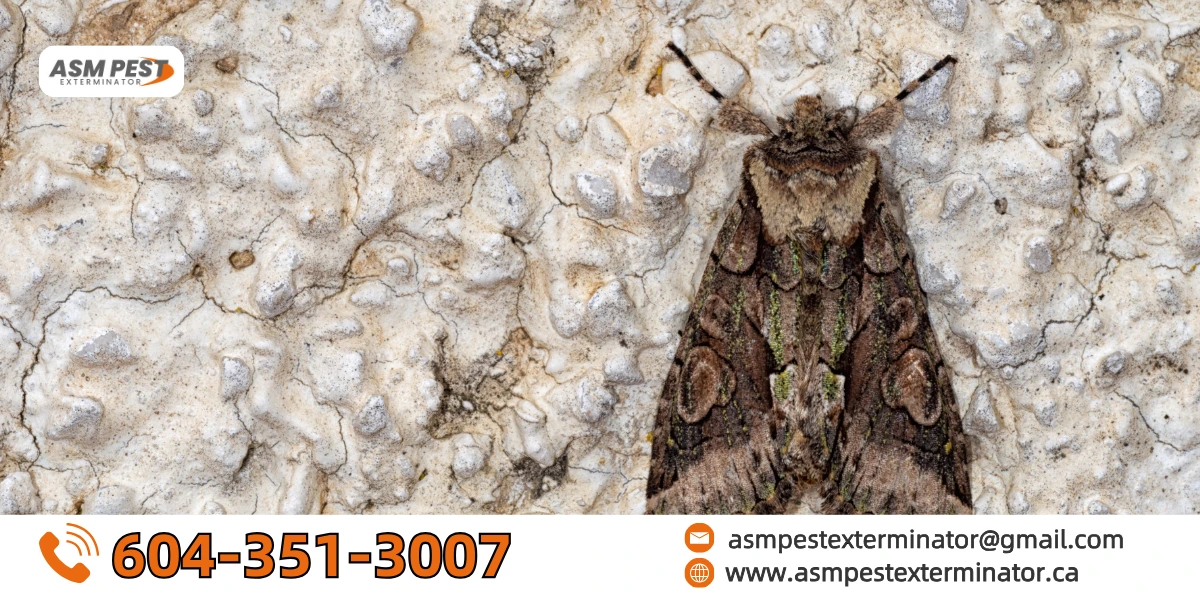In case you have observed small, furry creatures roaming under sinks, showers, or floor drains, then you are likely coping with moth flies, also known as drain flies. These moth-like insects are harmless and are not dangerous at all, but they can be quite a nuisance. When they are not treated, they multiply in number, and before you know it, you have them at any time you turn on a tap. This is a serious problem, and the first step in knowing how to get rid of moth flies includes knowing how they arise, how they breed, and why ordinary short-term solutions do not work.
Understanding Moth Flies
Moth flies are Psychodidae insects distributed all around the world, including homes, restaurants, and commercial buildings. They are small with short fuzzy bodies covered with wings, and this makes them fuzzy and look like moths. The adult moth flies have a life span of around 20 days, and in the 20 days, eggs are laid by the female moth, which may vary between 30 and 100 eggs. Often, these eggs are laid above the waterline within drains.
The eggs emerge after approximately 48 hours and give birth to half-transparent, almost 4-5 mm long larvae. These larvae are known to feed on the slime-covered organic matter (biofilm) present in drain pipes, in septic systems, and sewage lines. If you are struggling with moth flies, finding effective moth control Coquitlam services can make a big difference. Local pest control experts understand the unique climate and environment here, helping to target and eliminate infestations faster.
Finding the Source of an Infestation
The best solution to eliminating drain flies is identifying the precise breeding point. The pests are likely to remain near the place they are hatched, so the most concentrated of the activities is usually at the source of the problem drain itself.
One of the simplest ways to detect the presence of a drain is the tape test: lay a strip of clear tape, sticky side down, over one area of the suspect drain. Ensure not to seal the drain closed; air should continue to circulate. Examine after 24-48 hours. When you observe little moth flies trapped in the tape, you have discovered your source.
Make sure it is not fruit flies or fungus gnats. Fruit flies also find fermenting food appealing, whereas the moth flies like wet drains. And if you’re unable to locate the source, then look around for your local moth control delta service provider to find a solution to this problem
Why They Appear
Drain flies thrive where standing water meets decaying organic matter. This includes kitchen sinks, bathroom drains, shower stalls, sump pumps, and even air conditioner drip pans. Leaky pipes and poorly ventilated areas can also create perfect breeding grounds.
Step-by-Step Removal
To truly eliminate moth flies, you need to remove both the adults and the breeding sites.
1. Clear Out the Drain
Start by removing the hair catcher or drain filter and cleaning it thoroughly. Hair, soap scum, and food particles provide ideal egg-laying sites.
2. Scrub the Pipe Walls
Use a stiff, long-handled drain brush to scrub the sides of the pipes. Twist and push the brush deep into the drain to loosen and remove the organic slime where larvae feed. For grime further down, a plumbing snake works well.
3. Use an Enzyme-Based Cleaner
Enzyme or bacterial drain cleaners are designed to digest organic buildup, unlike bleach or boiling water, which may kill some larvae but leave their food source intact. Pour the cleaner around the edge of the drain so it coats the walls completely.
4. Flush with Hot Water
After the cleaner has had time to work (follow the product’s instructions), flush the drain with hot water to wash away loosened debris.
5. Reduce Adult Numbers
While the real solution is cleaning, you can cut down on flying adults with simple traps. A bowl of apple cider vinegar with a drop of dish soap will attract and trap them. Light-based traps also work.
6. Maintain Clean Drains
Prevent future infestations by pouring enzyme cleaner down problem drains once a month, fixing leaks, and keeping moisture levels low.
When DIY Isn’t Enough
If moth flies return within a week or two despite thorough cleaning, the infestation may be coming from a hidden location such as a broken sewer line or inaccessible floor drain. In such cases, calling a professional or plumber is the fastest way to get long-term results.
FAQs About Moth Flies
1. Are moth flies harmful?
They don’t bite or transmit diseases directly, but they develop in unsanitary conditions and can carry bacteria from drains into living spaces.
2. Will bleach kill moth flies?
Bleach may kill some larvae on contact, but it doesn’t remove the biofilm they feed on. Without removing that layer, the problem often returns.
3. Can moth flies live in toilets?
Yes. They can breed in toilet tanks, especially if not used often, or in the moist organic matter in the bowl’s siphon area.
4. How do I stop them from coming back?
Regularly clean drains, fix leaks, and use enzyme cleaners monthly. Keep bathroom and kitchen areas dry and well-ventilated.
Final Thoughts
Moth flies are persistent, but they’re no match for a thorough cleaning routine and consistent prevention with ASM Pest Exterminator. By targeting the source, the slimy buildup inside drains, you can get rid of moth flies and keep them from returning. The key is patience, attention to detail, and ongoing maintenance.




